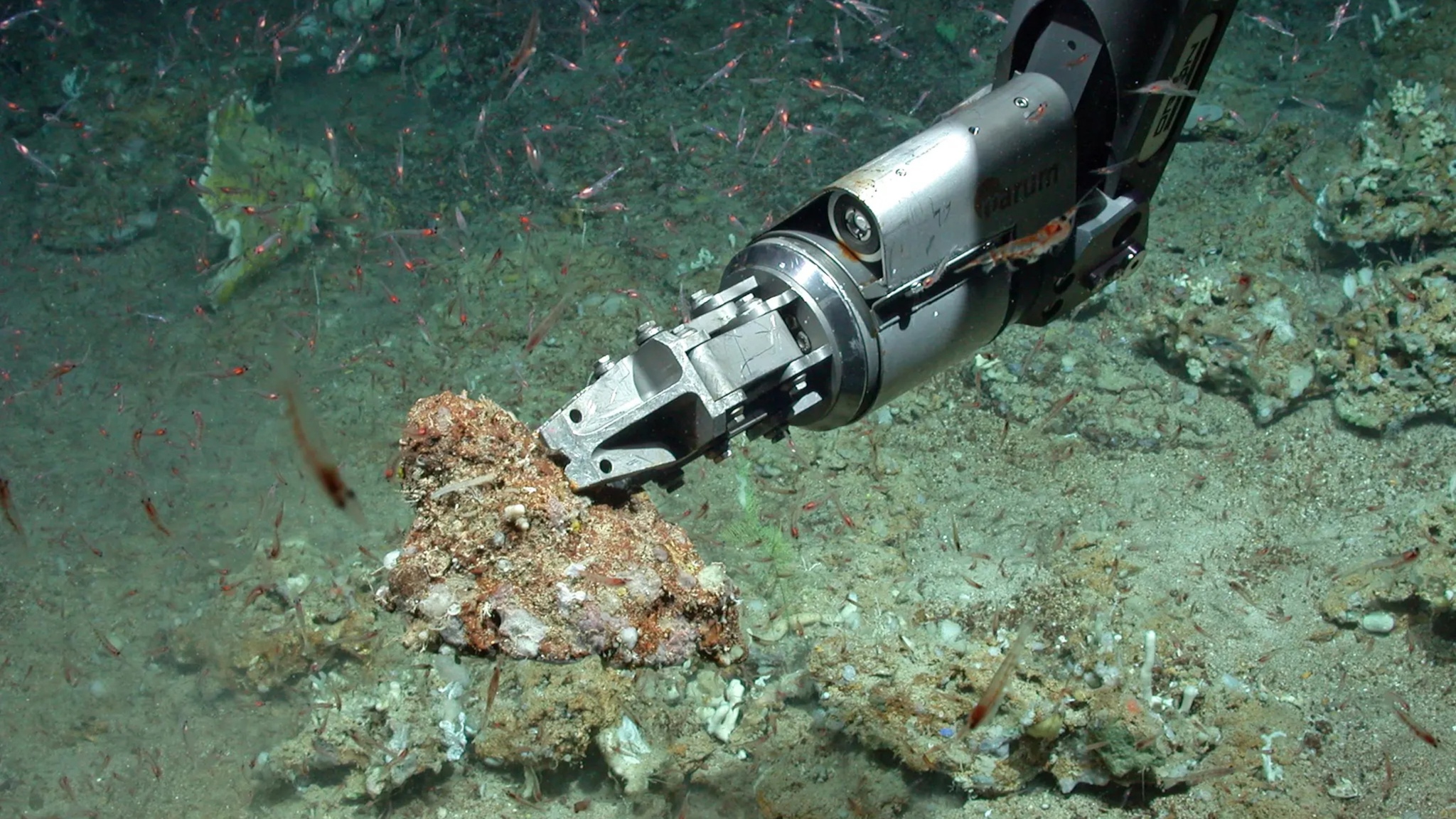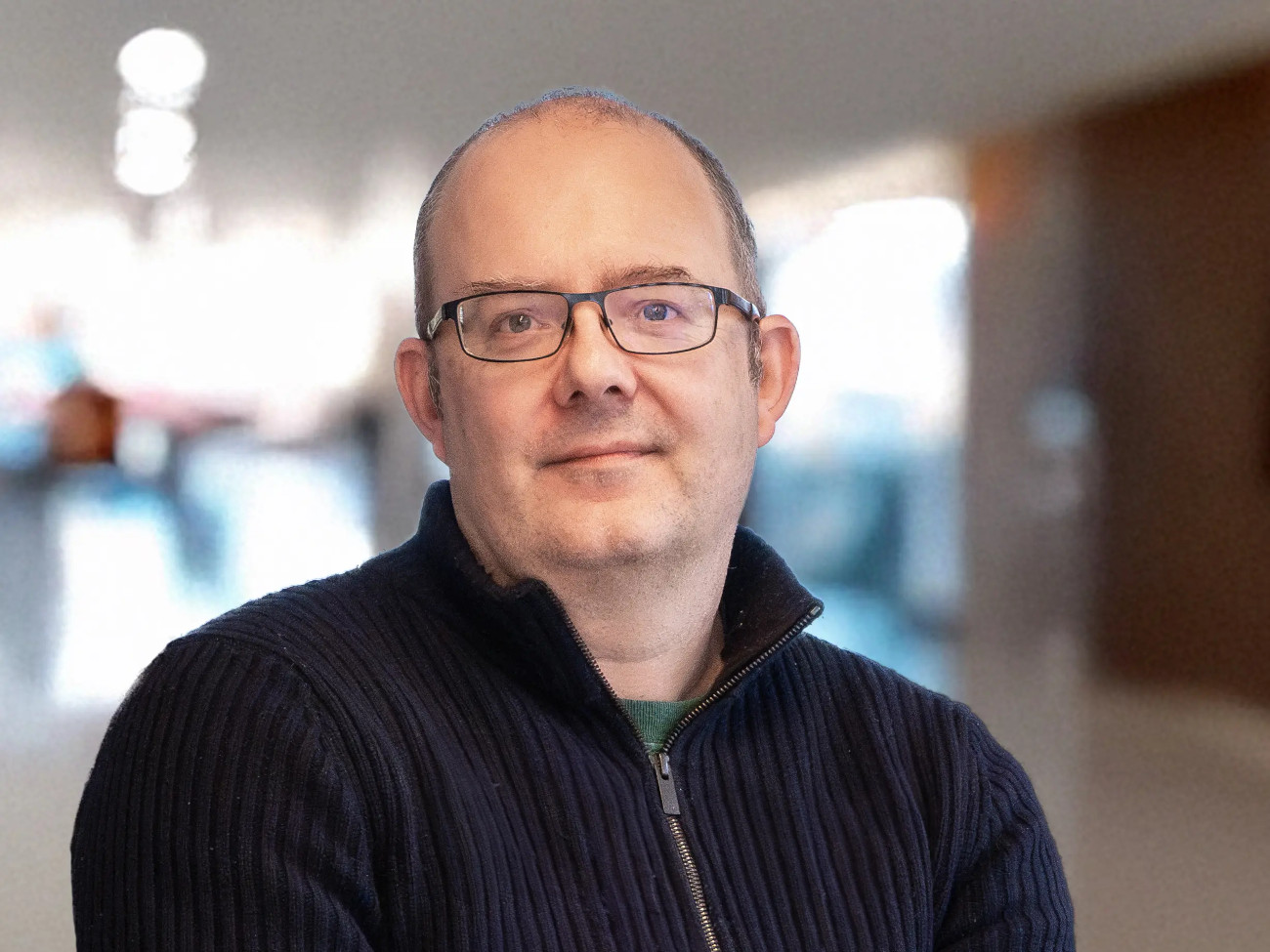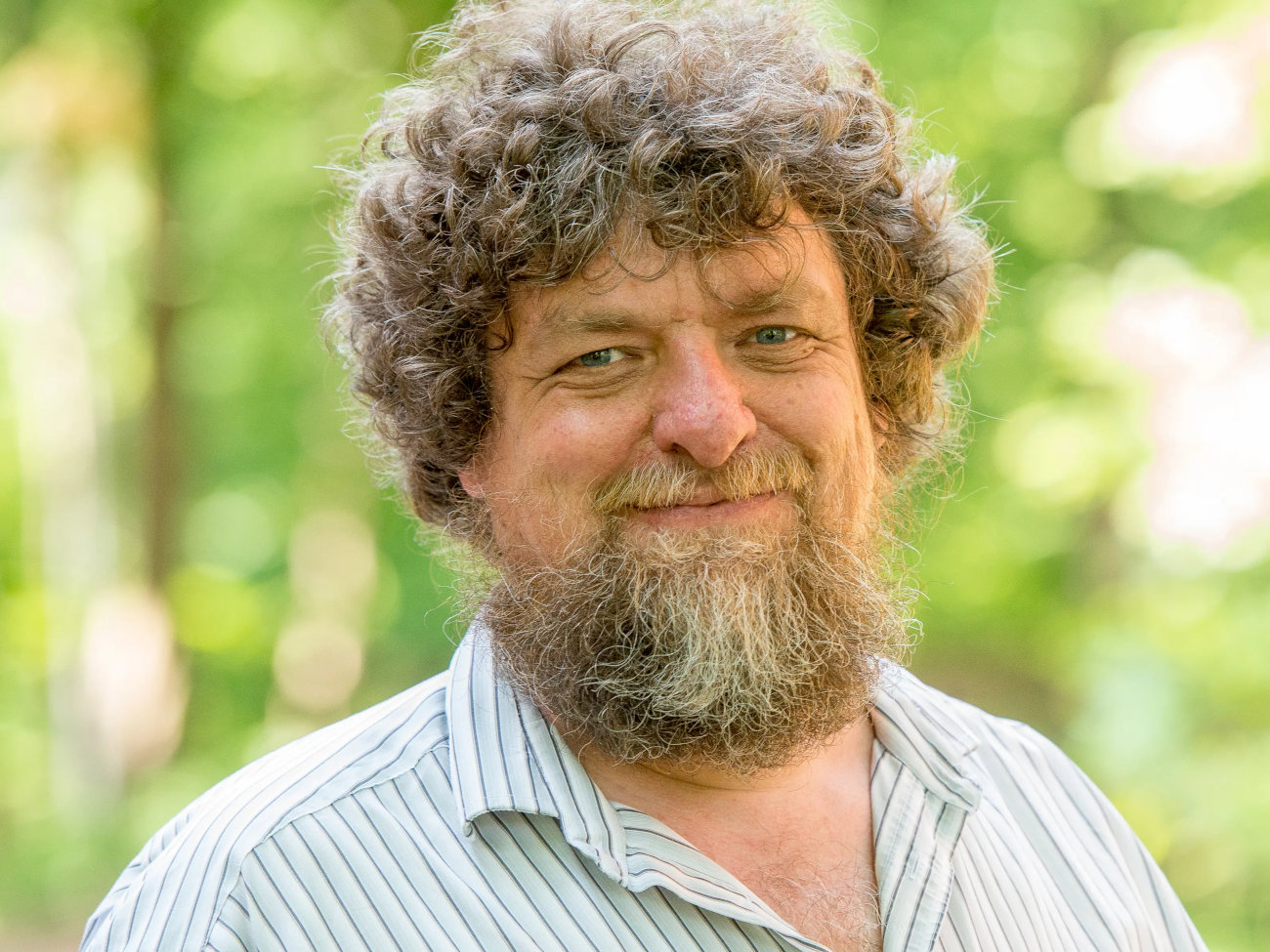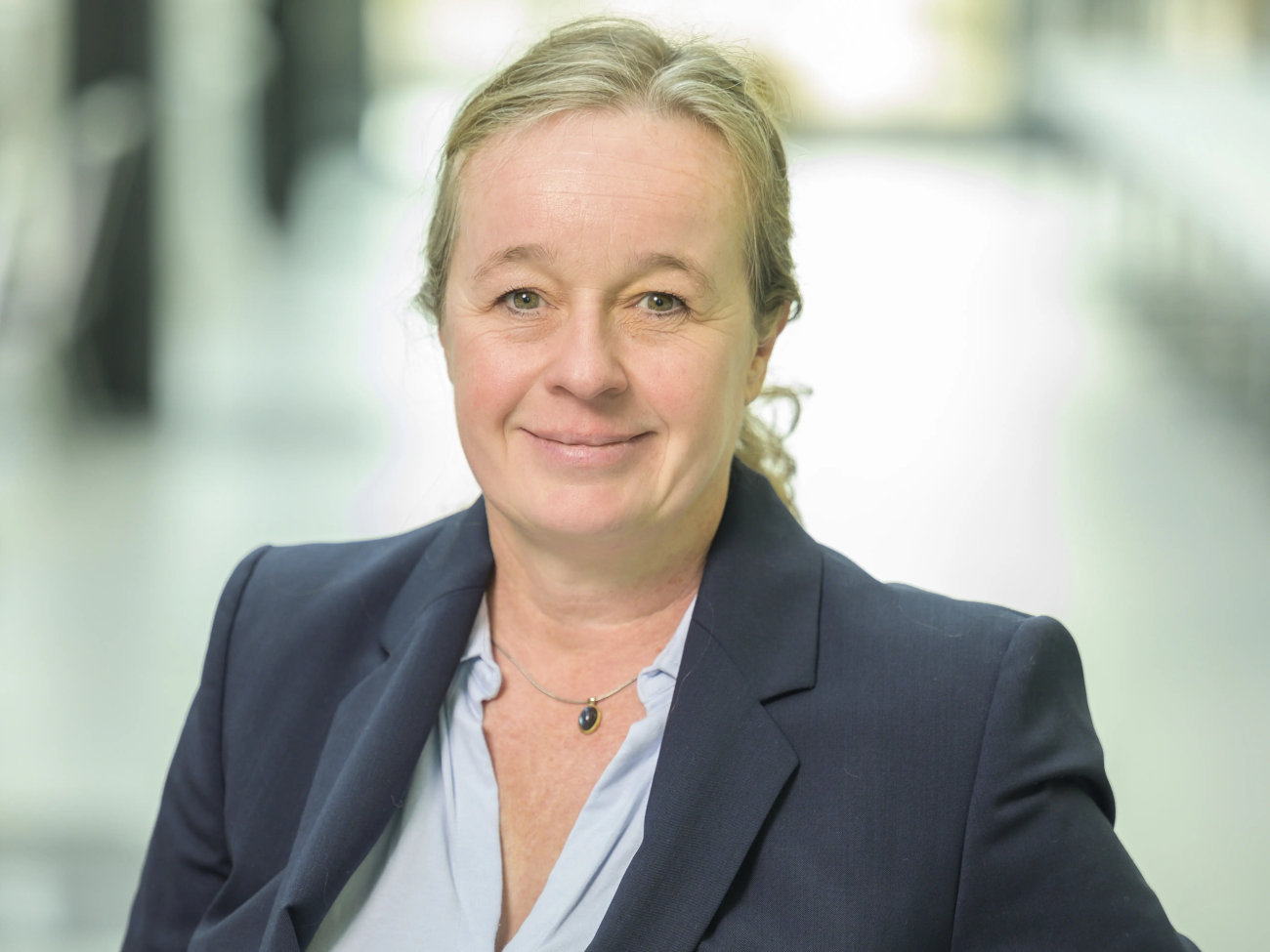
© MARUM – Zentrum für Marine Umweltwissenschaften der Universität Bremen
The Ocean Floor: A Deep Dive
Researchers from Bremen and Oldenburg are working together on important issues for the future. They jointly applied for the Excellence Strategy
At the University of Bremen, scientists from several fields have long been researching the sea and the effects of global warming on marine ecosystems. MARUM’s “The Ocean Floor – Earth’s Uncharted Interface” Cluster of Excellence has submitted a joint application for continuation together with the University of Oldenburg, which is already a partner in the existing Cluster of Excellence. The two universities want to bundle their strengths. In an interview with up2date, three researchers report on their collaboration.
Bremen and Oldenburg have been collaborating for a long time, haven’t they?
Helmut Hillebrand: Yes, they have. Two of the 25 main applicants from Oldenburg are already part of the current cluster – Thorsten Dittmar and myself.
Heiko Pälike: This collaboration works very well and involves many early career researchers. There is very good networking.
Gesine Mollenhauer: Collaborations between the University of Bremen and AWI are also very well established. AWI and the University of Bremen worked together in several projects prior to this. There is a long and trusting partnership here. Close cooperation between AWI and the University of Oldenburg has existed for several years through the Helmholtz Institute for Functional Marine Biodiversity (HIFMB), but also beyond that.
In what areas has the collaboration already been fruitful?
Heiko Pälike: In the previous phase of the cluster, we worked closely together on the interaction between paleoclimate and paleo-ecosystems as well as paleo-biodiversity. A very exciting finding is that living things in the ocean are actively involved in material cycles and climate-relevant processes. In addition, the sediments of the ocean floor provide a way for us to reconstruct and record the simultaneous changes in habitats and environmental conditions over very long periods of time. Recognizing linked influences and changes is often only possible when considering longer time periods across the entire geographical area and then integrating these into our understanding of the process.
Gesine Mollenhauer: In the current Cluster of Excellence, we are working on age dating dissolved organic carbon. Radiocarbon dating with the 14c method is my expertise, and the Oldenburg colleagues are investigating the molecular composition of the dissolved organic matter (DOM). Together, age and composition can shed light on ocean transformation processes and the role of the DOM in the global carbon cycle. This collaboration has resulted in further joint projects for which we are currently seeking funding.
Helmut Hillebrand: My research into how humans influence biodiversity led to this interaction. In addition to the cluster, this included a joint postdoctoral project funded by the University of Oldenburg as well as a Federal Ministry of Education and Research project that aims to protect biodiversity, named AGELESS. The latter project is a collaboration of four applicants from Oldenburg and two from Bremen, where it is coordinated. A further collaboration arose from our joint research on tipping points in the climate system, which prompted us to initiate a HIFMB-funded project with five postdocs on this topic. This postdoctoral cohort will commence in January 2025, with one of the postdocs being supervised at both MARUM and HIFMB.

© Annemarie Popp / Universität Bremen
How does your research complement each other’s?
Heiko Pälike: As a geoscientist, it is very advantageous for me to be able to consult with colleagues within the cluster who are experts in detailed biological networks and coupled ecosystems. The methods and theoretical challenges of Earth system and ecosystem research are somewhat similar. In both cases, the objective is to classify complex feedback processes against the background of time series and observations, with the ultimate goal of understanding the impact on the environment.
Gesine Mollenhauer: The methods we use complement each other well, and applying these different methods to the same samples can provide new insights into the turnover of DOM in the ocean. Our research groups each operate sophisticated analytical laboratories with highly sensitive equipment. Therefore, collaboration is mutually beneficial, as no single institute can provide all the methods on its own.
Helmut Hillebrand: In the cluster, I collaborate primarily with colleagues who study microfossils, namely the deposits of plankton organisms in sedimentary deposits on the ocean floor. The main challenge in analyzing and evaluating the current changes in biodiversity is the lack of a suitable baseline. What was the state of biodiversity prior to the advent of industrialization? With the exception of a few cases, records date back only a few decades. By analyzing paleo-biological information from the perspective of biodiversity research, we now have – at least for some groups of marine life – a time machine with which we can evaluate this baseline.

© Daniel Schmidt / Universität Oldenburg
What have you discovered?
Heiko Pälike: In collaboration with research partners, researchers in the cluster have successfully compiled the climate history of the world’s oceans over the past 66 million years in detail and with precise dating. With this basic building block, the next phase will involve examining this unique archive and ascertaining the extent of interaction between biological and chemical/physical processes in the Earth system, with a particular focus on the extent to which earlier phases of global warming resulted in changes. This includes the understanding that there have always been thresholds at certain transitions in the past. The benefits of identifying the extremes, variability, and non-linear transitions from our data pool and recognizing them globally are immense. The cluster has developed novel modeling techniques that integrate the analysis of both slow processes in the Earth’s crust and faster processes occurring in the ocean floor and the ocean itself. These findings and methods did not exist seven years ago; however, they are crucial for developing a comprehensive understanding of the process in the next phase of the cluster. This would not just reflect the current state of the Earth system, but provide insights into potential future scenarios involving warmer temperatures as well.
Gesine Mollenhauer: The initial objective was to provide a comprehensive account of the methodology’s sensitivity. In 14c dating, an accurate determination of the background value is of particular importance, as this is the only means of interpreting measured values accurately. We were also able to show by measuring large sample sets that DOM behaves largely conservatively in marine environments, with ocean currents playing a pivotal role in influencing its concentration, age, and composition at greater water depths. However, our research also revealed previously undocumented processes. For instance, we found that in the northeastern Atlantic, fresh DOM is rapidly transported down the continental slope into the deep sea.
Helmut Hillebrand: Based on the microfossils, we were able to show that communities have already undergone a shift to colder regions as a consequence of climate change. The current rate of change in community movement is significantly higher than that which would be expected based on data from the past millennia. This is one of the clearest instances of human impact on marine life that has been scientifically demonstrated. However, our findings also indicate that the shift in community composition does not align with warming trends, which presents a significant challenge in predicting the future impact of climate change.

© Kerstin Rolfes
How will the focus of the cluster change going forward?
Heiko Pälike: Based on our scientific results and the methods and data newly developed in the first phase, we are now in a position to address new questions. These include the topic of carbon storage in the ocean floor and the related question of how much and how quickly carbon dioxide is removed from the atmosphere via the ocean, as well as the extent to which biological processes impact this effect known as the biological carbon pump under varying environmental conditions. We want to determine whether the strength and efficiency of the biological pump will change if the ocean continues to warm, at what speed organisms can adapt to temperature and ocean circulation patterns, what effect these adaptations have on the climate, as well as what future scenarios can be derived from this. We also have an increased focus on variability and extremes of marine environmental conditions as well as possible tipping points and thresholds in the Earth system.
Why is it becoming increasingly important to work together beyond university and subject boundaries?
Helmut Hillebrand: I can no longer answer the question of how a change in temperature affects the properties of living communities from a biological point of view alone. Just to get realistic estimates of temperature variability, I need geochemical, physical, and oceanographic information that I can couple with my ecological research, preferably including further cooperation with data analysis and modeling. The social issues facing science have become so great that cooperation is indispensable.
Gesine Mollenhauer: The major challenges that the climate and biodiversity crisis poses to humanity make interdisciplinary work increasingly important, because the anthropogenic effects influence biological processes as well as biogeochemical interactions and physical processes such as ocean circulation. These changes are all interrelated. Therefore, only a common consideration can lead to an understanding of our climate system that enables effective action to mitigate global crises.